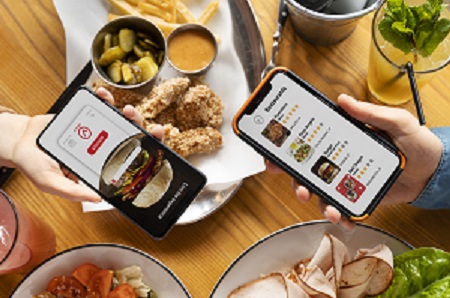
In the era of digital convenience, on-demand grocery delivery app development have become an indispensable part of our lives. From fresh produce to household essentials, these apps bring the supermarket to our fingertips. Behind the seamless user experience lies a variety of business models that have shaped the success of these on-demand grocery delivery services. Let’s delve into four successful business models that have transformed the way we shop for groceries.
Aggregator Model: Bringing Variety to Your Doorstep
The aggregator model is the pioneer in the on-demand grocery delivery landscape. It acts as a middleman, partnering with multiple local grocery stores and connecting them with customers through a single platform. Here’s how it works:
How the Aggregator Model Works:
- Marketplace Integration: The app integrates with local grocery stores, creating a virtual marketplace.
- Product Listing: Customers browse through a wide range of products listed from various stores.
- Order Placement: Users place orders through the app, selecting items from different stores.
- Delivery Coordination: The aggregator coordinates with the respective stores for order fulfillment.
- Last-Mile Delivery: The app manages the delivery logistics, ensuring orders reach customers promptly.
Pros of the Aggregator Model:
- Variety: Customers can access a diverse range of products from multiple stores.
- Competition: Encourages healthy competition among local grocery businesses.
- Convenience: One-stop-shop for users, simplifying the shopping experience.
Challenges:
- Logistics: Coordinating with multiple stores can pose challenges in terms of logistics.
- Quality Control: Ensuring the quality of products from different sources can be demanding.
Inventory-based Model: Controlling the Supply Chain
The inventory-based model takes a different approach by managing its inventory and supply chain. This model involves establishing warehouses where the company stocks products, giving them greater control over the entire process.
How the Inventory-based Model Works:
- Warehousing: The company maintains its warehouses stocked with various grocery items.
- Inventory Management: Complete control over inventory, ensuring stock availability.
- Order Processing: Users place orders directly on the app, and the company fulfills them from its inventory.
- In-house Delivery: The company manages its fleet for last-mile delivery.
Pros of the Inventory-based Model:
- Quality Assurance: Direct control over inventory ensures product quality and freshness.
- Efficiency: Streamlined supply chain and faster order fulfillment.
- Brand Loyalty: Users associate the app with the quality of products provided.
Challenges:
- Initial Investment: Establishing and maintaining warehouses require significant upfront investment.
- Limited Variety: The range of products may be limited compared to the aggregator model.
Subscription-based Model: Ensuring Regular Deliveries
The subscription-based model adds a layer of predictability to on-demand grocery delivery. Users subscribe to a service that delivers essential items regularly, ensuring a steady stream of revenue for the app.
How the Subscription-based Model Works:
- Subscription Tiers: Users choose a subscription tier based on their needs (weekly, bi-weekly, monthly).
- Customization: Subscribers can customize their orders, setting preferences for specific products.
- Automatic Renewal: Subscriptions renew automatically, providing a hassle-free experience for users.
- Exclusive Benefits: Subscribers may receive exclusive discounts, early access to promotions, or free deliveries.
Pros of the Subscription-based Model:
- Predictable Revenue: Regular subscriptions provide a stable income for the app.
- Customer Loyalty: Subscribers tend to stick with the app, fostering long-term relationships.
- Convenience: Users enjoy the convenience of scheduled deliveries.
Challenges:
- Market Saturation: The success of this model depends on market demand and the app’s ability to differentiate.
- Changing Preferences: Adapting to shifting customer preferences can be challenging.
Crowdsourced Model: Empowering Local Communities
The crowdsourced model leverages the power of the community to fulfill orders. Independent contractors, often local residents, act as delivery personnel, creating a decentralized and community-driven approach.
How the Crowdsourced Model Works:
- On-demand Workforce: The app recruits local individuals as delivery partners.
- Order Assignment: Orders are assigned to available delivery personnel based on proximity.
- Flexible Hours: Delivery partners work on a flexible schedule, enhancing workforce diversity.
- Community Engagement: Empowers local individuals and fosters a sense of community.
Pros of the Crowdsourced Model:
- Cost-Efficiency: Reduced overhead costs associated with maintaining a dedicated delivery fleet.
- Local Engagement: Strengthens ties with the local community and creates employment opportunities.
- Scalability: Easily scalable as the app can expand by onboarding more local partners.
Challenges:
- Quality Control: Maintaining consistency in service quality across a diverse group of delivery partners.
- Reliability: Depending on independent contractors can pose challenges in terms of reliability.
Conclusion
As the on-demand grocery delivery industry continues to evolve, choosing the right business model is crucial for success. Each model comes with its own set of advantages and challenges. Whether it’s the aggregator, inventory-based, subscription-based, or crowdsourced model, understanding the dynamics of each can help entrepreneurs make informed decisions in a highly competitive market.









